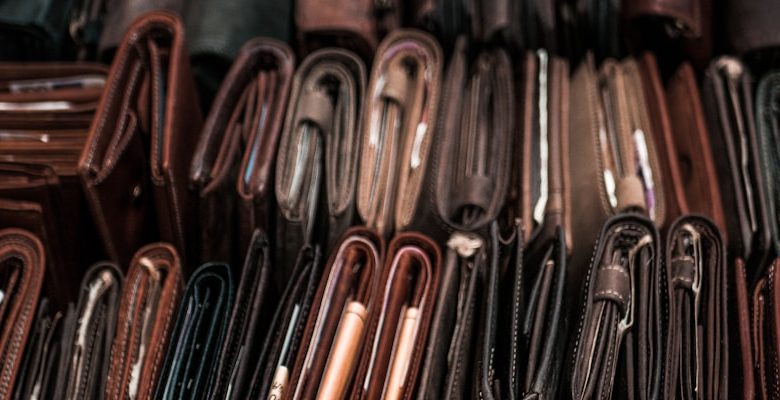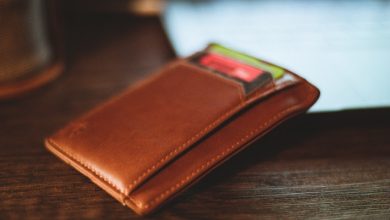How to Secure Your Wallet Against Cyber Threats

- Understanding the Risks of Cyber Threats to Your Wallet
- Best Practices for Protecting Your Digital Wallet from Hackers
- Tips for Creating a Strong and Secure Password for Your Wallet
- The Importance of Two-Factor Authentication in Wallet Security
- How to Safely Store and Backup Your Wallet Data
- Common Scams to Watch Out for When Using Your Digital Wallet
Understanding the Risks of Cyber Threats to Your Wallet
It is crucial to understand the various risks that cyber threats pose to your wallet. Cybercriminals are constantly evolving their tactics to gain access to sensitive financial information, putting your hard-earned money at risk. By being aware of these risks, you can take proactive measures to secure your wallet and protect yourself from potential cyber attacks.
One common cyber threat to your wallet is phishing scams, where cybercriminals attempt to trick you into providing personal information such as login credentials or credit card details. These scams often come in the form of emails or messages that appear to be from legitimate sources, but are actually designed to steal your information. It is important to be cautious and avoid clicking on any suspicious links or providing personal information online.
Another risk to your wallet is malware, malicious software designed to infect your devices and steal your financial information. Malware can be unknowingly downloaded onto your devices through phishing emails, malicious websites, or unsecured networks. To protect your wallet from malware attacks, ensure that you have up-to-date antivirus software installed on all your devices and avoid downloading files from untrusted sources.
Additionally, identity theft is a significant risk when it comes to cyber threats to your wallet. Cybercriminals can use stolen personal information to open fraudulent accounts, make unauthorized purchases, or even access your existing financial accounts. To prevent identity theft, monitor your financial statements regularly for any suspicious activity, use strong and unique passwords for all your accounts, and consider using identity theft protection services.
By understanding the risks of cyber threats to your wallet and taking proactive steps to secure your financial information, you can reduce the likelihood of falling victim to cyber attacks and protect your hard-earned money from potential harm.
Best Practices for Protecting Your Digital Wallet from Hackers
When it comes to protecting your digital wallet from hackers, there are several best practices you can follow to ensure the security of your funds and personal information.
- First and foremost, make sure to use a strong and unique password for your digital wallet. Avoid using easily guessable passwords such as “123456” or “password”. Instead, opt for a combination of letters, numbers, and special characters to make it more secure.
- Enable two-factor authentication (2FA) whenever possible. This adds an extra layer of security to your digital wallet by requiring a secondary form of verification in addition to your password.
- Be cautious of phishing scams. Hackers often use phishing emails or fake websites to trick users into giving away their login credentials. Always double-check the URL of the website and never click on suspicious links.
- Keep your digital wallet software up to date. Developers often release security patches and updates to address vulnerabilities that hackers could exploit. By keeping your software updated, you can protect your wallet from known threats.
- Avoid accessing your digital wallet on public Wi-Fi networks. These networks are often unsecured, making it easy for hackers to intercept your data. Instead, use a secure and private network to access your wallet.
Tips for Creating a Strong and Secure Password for Your Wallet
When creating a strong and secure password for your wallet, it is important to follow certain guidelines to protect your funds from cyber threats. Here are some tips to help you create a robust password:
- Use a combination of uppercase and lowercase letters to make it harder to crack.
- Include numbers and special characters to increase the complexity of the password.
- Avoid using easily guessable information such as your name, birthdate, or common words.
- Make sure your password is at least 12 characters long to enhance security.
- Consider using a passphrase that is easy for you to remember but difficult for others to guess.
Remember to never share your password with anyone and avoid using the same password for multiple accounts. By following these tips, you can help safeguard your wallet against potential threats and keep your funds secure.
The Importance of Two-Factor Authentication in Wallet Security
One crucial aspect of securing your wallet against cyber threats is implementing two-factor authentication (2FA). This additional layer of security helps protect your funds from unauthorized access. By requiring two different forms of identification, such as a password and a code sent to your phone, 2FA significantly reduces the risk of hacking.
Many wallet providers offer 2FA as an option to enhance security. It is essential to enable this feature to safeguard your assets effectively. In addition to protecting your funds, 2FA also adds an extra level of assurance that only authorized users can access your wallet.
While no security measure is foolproof, 2FA is a critical tool in the fight against cyber threats. By taking this simple step, you can significantly reduce the chances of falling victim to hackers and keep your funds safe and secure.
How to Safely Store and Backup Your Wallet Data
To safely store and backup your wallet data, it is crucial to take certain precautions. One option is to utilize a secure hardware wallet, which makes it difficult for hackers to access your information. Additionally, consider encrypting your wallet data before storing it on any device. This adds an extra layer of protection in case your device is compromised.
Another important step is to regularly backup your wallet data. This can be done by creating a backup file and storing it in a secure location, such as an external hard drive or a cloud storage service. By doing this, you can ensure that your data is safe even if your device is lost or damaged.
It is also recommended to avoid storing your wallet data on public or shared devices, as these are more susceptible to cyber threats. Instead, keep your data on devices that are password-protected and have security measures in place. By following these tips, you can better protect your wallet against potential cyber attacks.
Common Scams to Watch Out for When Using Your Digital Wallet
When using your digital wallet, it is important to be aware of common scams that can threaten the security of your funds. By staying informed and vigilant, you can protect yourself from falling victim to these malicious schemes.
One common scam to watch out for is phishing attempts. Scammers may send you emails or messages pretending to be from your digital wallet provider, asking you to provide your login credentials or personal information. Always verify the sender’s identity and never click on suspicious links.
Another scam to be cautious of is fake mobile apps. Cybercriminals may create counterfeit apps that mimic legitimate digital wallet services to trick users into entering their sensitive data. Make sure to only download apps from official app stores and read reviews before installing.
Be wary of social engineering tactics as well. Scammers may try to manipulate you into revealing your wallet information through phone calls or messages. Remember that legitimate companies will never ask for your password or private keys over the phone.
Lastly, watch out for fraudulent investment schemes promising high returns. If something sounds too good to be true, it probably is. Always do your research and only invest in reputable projects to avoid losing your funds to scams.



